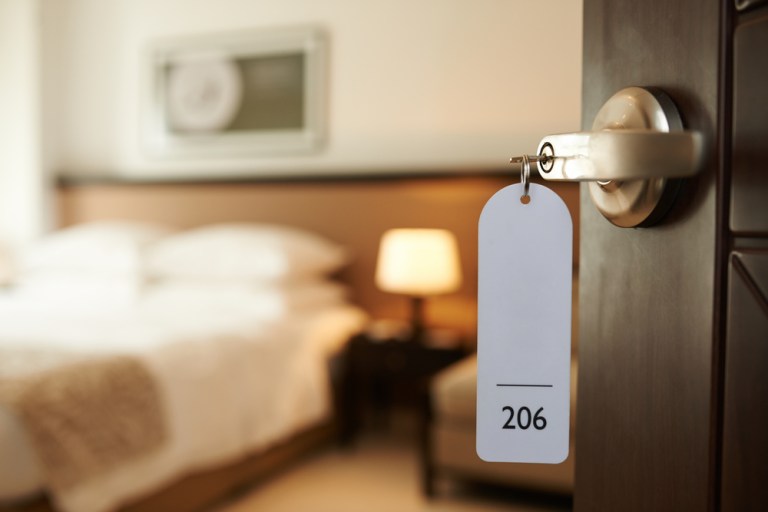
Alternative payments methods, such as contactless and QR codes, have been growing globally in popularity for the last half-decade or so. However, the year 2018 has seen something of a quiet sea change when it comes to the acceptance of such payment methods among hotels around the globe.
Since the beginning of the year, Merchant Link’s Director of Product Christian McMahon told PYMNTS in a recent conversation, there has been “a ton of interest” from every part of the hotel industry.
Much of that, he noted, is driven by Chinese travelers, who use QR-based systems offered by WeChat Pay (with more than 1 billion monthly active users) and Alipay (with 870 million annual active users) as their primary payment methods. This is how those travelers shop for goods, buy food, pay for transportation and pay their bills. It’s only natural, McMahon noted, that when they travel abroad, they want to continue to tap into their most-favored and best-understood payment method.
“Hotels can see that this is an opportunity to offer a great new way to interact with their guests by offering a very attractive payment method — and they definitely want to be able to support it,” McMahon said.
He noted, though, that that desire is somewhat tempered by the complex realities of putting these systems into place, which is not as easy as flipping a switch. The changeover is definitely coming because the momentum of the market is obviously there. However, moving along with that momentum has some clear obstacles in the way, which must be removed before the hotel industry as a whole can use alternative payment schemes to their maximum advantage.
The Background Challenges
Hotels, he said, have a complicated payments structure. Most hotels use long-established, credit-card-based guest stay and back-office business processes. Furthermore, hotel chains may be franchised, which means one might be dealing with a wide variety of modern to aging systems. It can be daunting to bring an overall payment solution to market or standardize the deployment of new technologies.
Customer payment experience is another area where hoteliers are looking for smooth and seamless transactions, which means the flow and cadence of the payment is extremely important.
“You don’t want customers to feel like some payments are performed radically different from other kinds,” McMahon said. “From the consumer standpoint, they want to have a similar experience every time they check in to a hotel.
These kinds of systems and processes, he added, can be tricky to change in an industry that is so varied. Moreover, moving to alternative payment methods means that hotels have a lot of work to do just to prepare their entire systems. Getting systems ready and able to take these payments is the next, extremely important foundational challenge.
Those are just the peripheral difficulties, he noted. The big challenge is making QR code-based payments flow properly in a hotel environment, which is not ideally suited to their use.
The QR Challenge
QR payments, McMahon told PYMNTS, work extremely well in many environments, such as retail or QSR dining — any place where the payment concludes the transaction entirely and the price is not likely to change. The customer scans a QR code or has their code scanned by a merchant, and the total amount of the payment is debited from their account. Easy peasy.
Things get a little more complex in a fine-dining environment or a hotel, though, where the initial charge is likely to change because of things like tipping or room service.
“Customers at hotels can pay the entire charge for their stay [up] front, of course,” McMahon said, “but without a stored payment credential, it means that they aren’t able to do things like charge meals or spa treatments to their room, or any of the other services one usually associates with a hotel stay.”
There are workarounds for this that hotel chains can explore. Simply making the WeChat Pay or Alipay paid room a non-post room, allows the guest to use the alternate payment at check-in, then pay for each charge separately on the property. Some hotels are considering taking a credit card at check-in, then offering the alternate payment at checkout when most of the charges are known. Most hotels, however, are choosing the option of letting customers check in using their alternative payment method, then taking a credit card to cover incidental room and after-stay charges.
“Though it is a bit funny to have an alternative to the alternative payment method, which itself was an alternative to a credit card,” McMahon said.
However, he added, there is a cost — at some point, the consumer is being asked to choose between their stay experience and their desired payment experience.
The reality, he noted, is that when new payment methods are evolving, there is always going to be an adjustment in the market. Since hotels are highly complex environments, that evolution is going to look a little different — as different brands are finding the right way to build the experience for their customers, then present it to them.
The change is coming. Customers want it, McMahon said, and hotel chains are actually better-positioned to take advantage of it than they think, most of the time.
“One of the inadvertent consequences of the EMV mandate was a technology refresh in the hotel sector,” McMahon explained. “EMV terminals are more powerful payment entry devices that can now support so many more methods of payments.”
Those possibilities — combined with growth consumer demand — are driving chains to think and explore in ways they weren’t really considering even five years ago.
“And while I don’t think we can know where those explorations are all going to end up today,” McMahon said, “I think we can be sure that it will be a much more varied environment when it comes to paying for goods and services in the hospitality space.”